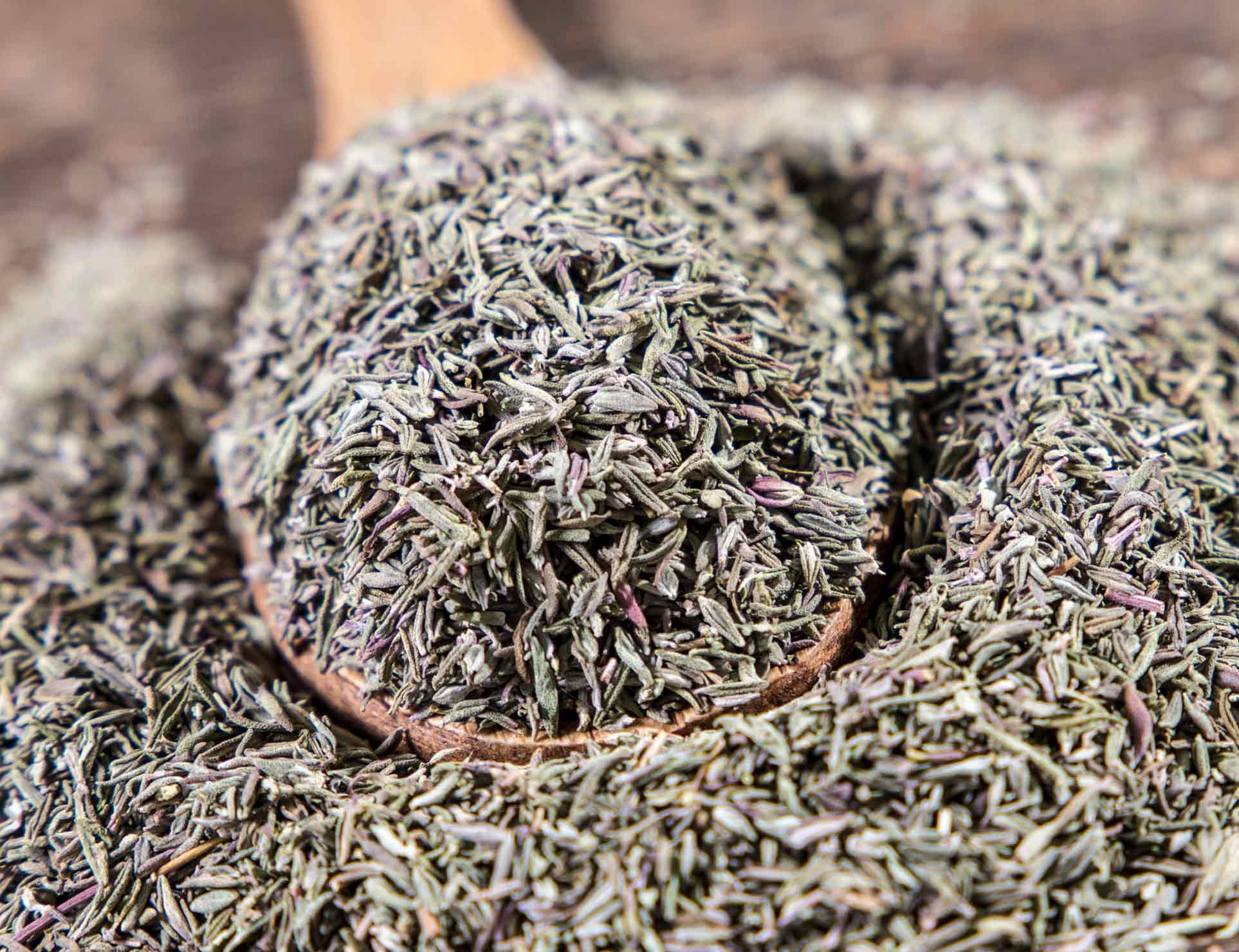Name: Thyme / Thyme plant
Family: Lamiaceae
Botanical name: Thymus vulgaris
Common names: zaatar, za’atar, zatar, Thyme, thyme herb, dried thyme, thyme seasoning
Information:
According to thyme leaves suppliers, Thyme herb is an evergreen herb with a lasting aromatic. It has many uses such as medicinal, culinary and ornamental. Thymus vulgaris is the most common kind. Thyme is back to the mint family (lamiaceae) genus Thymus, and also the oregano genus Origanum relative.
History of thyme:
Thyme herb was used by the ancient Egyptian for mummifying. Where the ancient Greek considering it a courage source so they burnt it like incense at their temples, they also used it at their bathes. Roman was the cause of spreading thyme in Europe, as they add an aromatic taste to liqueurs and cheese, they also purified their rooms by it. In the middle ages of Europe, they put thyme under the pillows to help for sleeping and prevent nightmares. In that time, thyme leaves were given to knight and warriors by women because they considered it makes them more courage. They also put thyme in coffins as incense because they think that it confirms crossing to the next life.
Planting:
The best place to cultivate thyme plant is in hot sunny land where the soil is drained well. In general, thyme plant is cultivated in spring so it is considered a perennial plant. Thyme herb can be spawned by many ways like seed, cuttings, or dividing rooted section’s plant. It is also can endure the drought. Thyme plant can deal with deep freezes as they grow wild in the highlands of mountain.
The uses of thyme plant at cooking:
Thyme za’atar (Arabic for thyme) is considered a vital ingredient in Assyria and some Levantine countries. It also considered a main component of many foods.
All branch of thyme plant is used such as bouquet garni but it is depending on the plat use. Or it may remove the leaves and discard the stems. Generally, sprig or bunch on a food recipe means all the plant, but it is said a spoons it means only the leaves. Dried thyme herb is called for the whole plant.
You can remove the leaves from stems by grazing with the back of a knife or withdrawing it With a fork or your fingers.
Unlike other herbs, Thyme plant saves its taste by drying.
Ingredient:
Thymes herb essential oil (Thymus vulgaris), has thymol between 20-54%. Also it is also include a wide series of additional compounds like mycene borneol , p-cymene, and linalool.
Thymol an disinfectant, is a vigorous components in many mouthwashes products like Listerine.
Thyme healthy benefits:
1- Sore Throats fighting:
Thanks to the carvacoal content it contains, the oil of thyme plant is considered powerful natural antimicrobials, so it is able to fight sore throats.
2- Decrease the pressure of the blood and levels of cholesterol:
The thyme herb ingestion is resulting on antihypertensive activity, making it a good choice for people who complain of high blood pressure symptoms.
3- Stop the poising of the food:
Thyme pant is not only able to stop the contamination of food but also and clearing the prior poisoned foods as well.
4- Enhance the mood:
Studies have shown that the carvacrol that is found in thyme herb has effects on enhancing the mood.
5- Struggle cancer:
Thyme plant features studies shown that it is able to struggle tumor and cancer. Moreover, carvacrol which is a main ingredient in thyme herb essential oil has anti-tumor features.
6- Natural cure for bronchitis:
For many centuries, thyme plant has been used to cure bronchitis and coughs.
Back to nature – Ancient Egyptians use for thyme:
1- Used for preparing cooked food
2- The original material is Thymol
3- It is a repellent for worms and waste
4- Against tapeworms and fever
5- As an enema against the uterine urine and heartburn
6- It is used for angina
7- Against hearing impairment
8- It’s soaked used as tonics.
9- Anti-convulsions
10- Its oil was used to treat asthma and colds
11- To do an antiseptic solution used to wash the nose and mouth
More related articles:


